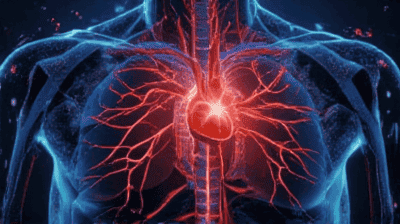
Heart disease remains the leading cause of death worldwide, claiming an estimated 17.9 million lives each year. Despite advances in medical research, technology, and public health initiatives, the prevalence of heart disease continues to rise. Understanding the various factors contributing to this ongoing epidemic is essential for addressing the challenges of cardiovascular health in the 21st century.
Understanding Heart Disease
What is Heart Disease?
Heart disease encompasses a range of conditions affecting the heart and blood vessels, including:
Coronary Artery Disease (CAD): The most common type of heart disease, CAD occurs when the coronary arteries become narrowed or blocked due to atherosclerosis, a buildup of fatty deposits (plaques) on the artery walls. This condition can lead to angina (chest pain) and heart attacks.
Heart Failure: This condition arises when the heart cannot pump enough blood to meet the body's needs. It can result from several underlying problems, including CAD, high blood pressure, and previous heart attacks.
Arrhythmias: Irregular heartbeats that can disrupt the heart's normal function. Some arrhythmias are harmless, while others can be life-threatening.
Valvular Heart Disease: Involves damage to the heart valves, which can affect blood flow within the heart.
Congenital Heart Defects: Structural problems with the heart present at birth.
Global Statistics on Heart Disease
The World Health Organization (WHO) reports that heart disease accounts for approximately 32% of all global deaths. The burden of heart disease is not distributed equally; it varies across regions, age groups, and genders. Key statistics include:
Prevalence: About 1 in 4 deaths in the United States is attributed to heart disease, making it a leading cause of death.
Age Factor: While heart disease can occur at any age, the risk increases significantly after the age of 45 for men and 55 for women.
Gender Differences: Men generally have a higher risk of heart disease at a younger age than women, though women tend to catch up after menopause.
Risk Factors for Heart Disease

Understanding the risk factors associated with heart disease is crucial for prevention. These factors can be classified into non-modifiable and modifiable categories.
Non-Modifiable Risk Factors
Age: The risk of developing heart disease increases with age due to cumulative exposure to risk factors over time.
Gender: Men are at a higher risk of heart disease earlier in life, but women’s risk increases and can equal that of men post-menopause due to hormonal changes.
Genetics: A family history of heart disease can significantly increase an individual's risk, indicating a genetic predisposition.
Modifiable Risk Factors
Unhealthy Diet: Diets high in saturated fats, trans fats, cholesterol, sodium, and sugar can contribute to obesity and heart disease.
Physical Inactivity: A sedentary lifestyle increases the risk of developing heart disease, as regular physical activity helps maintain a healthy weight and lowers blood pressure.
Obesity: Excess body weight is associated with higher levels of LDL (bad) cholesterol, lower levels of HDL (good) cholesterol, increased blood pressure, and a higher risk of diabetes.
Smoking: Tobacco use is one of the most significant risk factors for heart disease. Smoking damages blood vessels and contributes to atherosclerosis.
High Blood Pressure (Hypertension): Over time, high blood pressure can damage arteries and lead to heart disease.
High Cholesterol: Elevated levels of LDL cholesterol can lead to plaque buildup in arteries, increasing the risk of heart disease.
Diabetes: Individuals with diabetes are at a significantly higher risk of developing heart disease due to high blood sugar levels damaging blood vessels.
Stress: Chronic stress may contribute to heart disease through unhealthy coping mechanisms such as poor diet, smoking, or physical inactivity.
Excessive Alcohol Consumption: Drinking too much alcohol can raise blood pressure, contribute to weight gain, and increase the risk of heart disease.
The Evolution of Heart Disease Research
Historical Perspectives
The understanding of heart disease has evolved significantly over the past century. Early 20th-century medicine had limited knowledge of cardiovascular conditions. Innovations in medical technology and research in the latter half of the century have markedly shifted perspectives on heart health.
Identification of Risk Factors: In the mid-20th century, researchers began to identify key risk factors for heart disease, such as high blood pressure and high cholesterol levels. The Framingham Heart Study, launched in 1948, was pivotal in establishing the connection between lifestyle choices and heart disease.
Advancements in Technology: The development of diagnostic techniques such as electrocardiograms (ECGs), echocardiograms, and angiography has improved the ability to diagnose and monitor heart conditions accurately.
Pharmacological Innovations: The introduction of statins in the late 20th century revolutionized cholesterol management and reduced the risk of heart disease.
Contemporary Research
Today, research continues to expand our understanding of heart disease and how to prevent it. Key areas of focus include:
Genetics and Genomics: Advancements in genetic research have led to insights into hereditary risk factors and the development of personalized medicine approaches based on genetic profiles.
Inflammation: Emerging research suggests that chronic inflammation may play a significant role in heart disease, leading to studies on anti-inflammatory medications as potential treatments.
Microbiome: The gut microbiome is being studied for its influence on cardiovascular health, as alterations in gut bacteria may impact inflammation and metabolism.
Technology and Wearable Devices: The use of wearable technology to monitor heart health in real-time is becoming increasingly popular, allowing for early detection of potential issues.
Prevention Strategies

Despite the challenges posed by heart disease, several effective prevention strategies can significantly reduce risk. These strategies empower individuals to take charge of their heart health and improve overall well-being.
Diet and Nutrition
Adopt a Heart-Healthy Diet: Emphasize a diet rich in fruits, vegetables, whole grains, lean proteins, and healthy fats. The Mediterranean diet and DASH (Dietary Approaches to Stop Hypertension) diet are often recommended for heart health.
Limit Unhealthy Fats: Reduce saturated and trans fats found in processed foods, fried foods, and fatty cuts of meat. Opt for healthy fats such as those found in avocados, nuts, seeds, and olive oil.
Reduce Sodium Intake: High sodium consumption is linked to hypertension. Aim to consume less than 2,300 milligrams of sodium daily, and for certain populations, limit intake to 1,500 milligrams.
Increase Fiber Intake: Dietary fiber, particularly soluble fiber found in fruits, vegetables, and whole grains, can help lower cholesterol levels and improve gut health.
Control Portion Sizes: Being mindful of portion sizes can help manage calorie intake and prevent weight gain.
Physical Activity
Get Moving: Aim for at least 150 minutes of moderate-intensity aerobic activity each week, such as brisk walking or cycling, along with muscle-strengthening activities on two or more days.
Incorporate Movement into Daily Life: Look for opportunities to be active throughout the day, such as taking the stairs instead of the elevator or walking during lunch breaks.
Find Enjoyable Activities: Engaging in physical activities that you enjoy can make it easier to stick to a routine.
Lifestyle Modifications
Quit Smoking: The benefits of quitting smoking are significant and include reduced risks of heart disease, stroke, and other health issues.
Limit Alcohol Consumption: If alcohol is consumed, it should be done in moderation—up to one drink per day for women and two for men.
Manage Stress: Implementing stress reduction techniques such as mindfulness, meditation, and yoga can promote mental well-being and heart health.
Get Regular Check-ups: Routine medical check-ups can help monitor blood pressure, cholesterol levels, and blood sugar levels, allowing for early intervention if needed.
Medication and Treatment
For individuals already diagnosed with heart disease or at high risk, medications may be necessary to manage risk factors:
Statins: These medications lower cholesterol levels and reduce the risk of cardiovascular events.
Antihypertensives: Blood pressure medications help manage hypertension, a key risk factor for heart disease.
Antiplatelet Agents: Medications like aspirin can reduce the risk of blood clots and cardiovascular events.
Diabetes Management: Proper management of diabetes through lifestyle changes and medication is crucial for reducing heart disease risk.
The Impact of COVID-19 on Heart Disease
Increased Risk for Cardiovascular Patients
The COVID-19 pandemic has brought additional challenges for individuals with heart disease. Research indicates that patients with pre-existing cardiovascular conditions are at a higher risk of severe illness and complications from COVID-19. The pandemic has also disrupted routine medical care, leading to delays in diagnosis and treatment.
Changes in Lifestyle and Care
Sedentary Behavior: Lockdowns and social distancing measures have led to increased sedentary behavior for many, potentially exacerbating risk factors for heart disease.
Mental Health Impact: The stress and anxiety associated with the pandemic may lead to unhealthy coping mechanisms, such as overeating, increased alcohol consumption, or smoking.
Access to Care: The healthcare system's strain during the pandemic has affected access to preventive care and management of chronic conditions, raising concerns about long-term consequences for cardiovascular health.
Aiming for a Healthier Future

Public Health Initiatives
To combat the ongoing heart disease epidemic, comprehensive public health initiatives are essential. Strategies to promote heart health at the population level include:
Awareness Campaigns: Increasing public awareness about heart disease risk factors, prevention strategies, and symptoms can empower individuals to make healthier choices.
Access to Healthy Foods: Community initiatives that improve access to nutritious foods can help combat dietary-related risk factors.
Physical Activity Programs: Encouraging physical activity through community centers, parks, and urban planning can promote healthier lifestyles.
Screening and Support Programs: Implementing screenings for high blood pressure, cholesterol, and diabetes in community settings can facilitate early detection and intervention.
The Role of Healthcare Professionals
Healthcare providers play a critical role in heart disease prevention and management. Strategies for improving patient outcomes include:
Patient Education: Educating patients about heart health, risk factors, and lifestyle changes can empower them to take an active role in their health.
Collaborative Care Models: Coordinating care among various healthcare professionals, including dietitians, exercise specialists, and mental health providers, can improve comprehensive management of heart disease.
Encouraging Healthy Behaviors: Healthcare providers can motivate patients to adopt and maintain heart-healthy lifestyles through supportive counseling and goal-setting.
Conclusion
Heart disease continues to be the leading global killer in the 21st century, posing significant challenges to public health. While risk factors and complications associated with heart disease are alarming, knowledge of prevention strategies and treatment options empowers individuals to take control of their heart health.
By prioritizing healthy lifestyle choices, fostering awareness, and supporting public health initiatives, we can work collectively to combat the heart disease epidemic. As research advances, new insights and innovations will further enhance our understanding and management of cardiovascular conditions.
Ultimately, heart disease's persistence underscores the need for continued efforts to raise awareness, promote healthy behaviors, and provide access to care, paving the way for a healthier future for individuals and communities worldwide.








